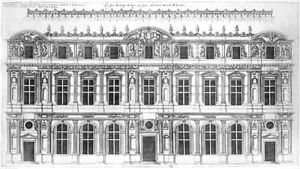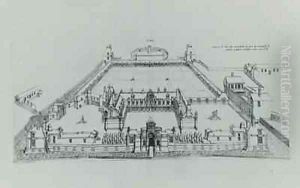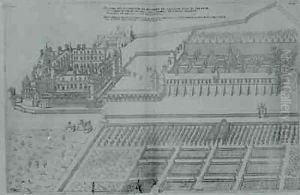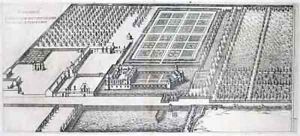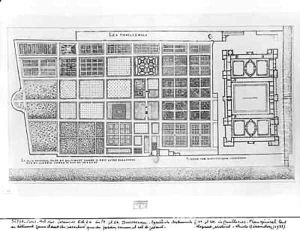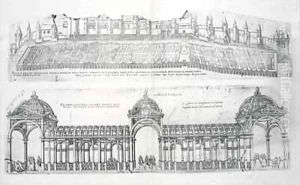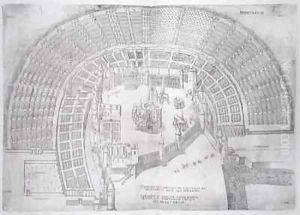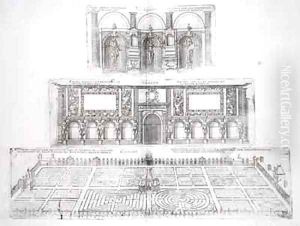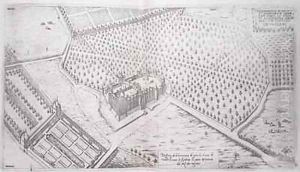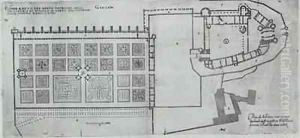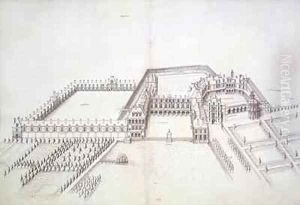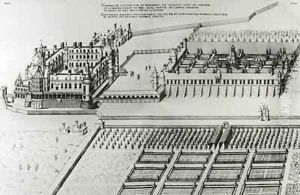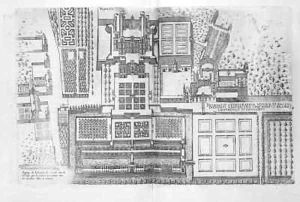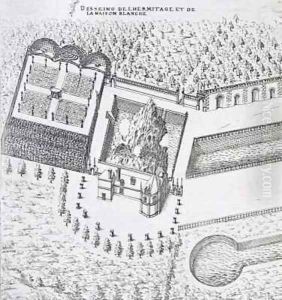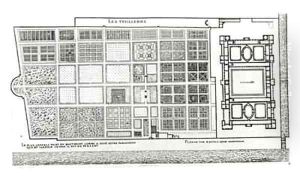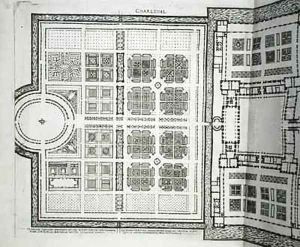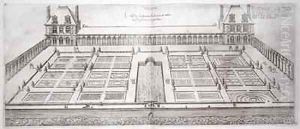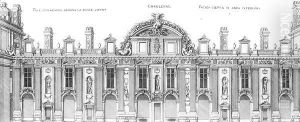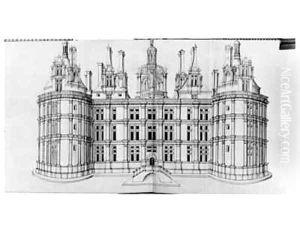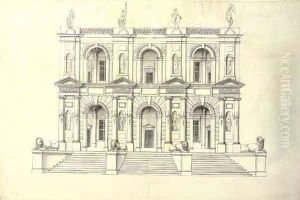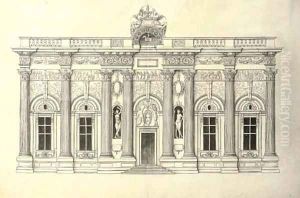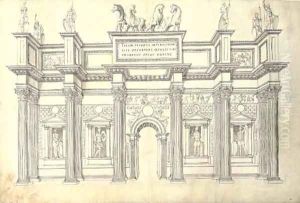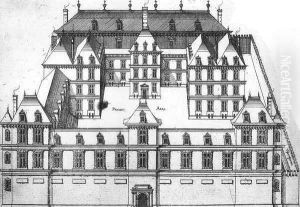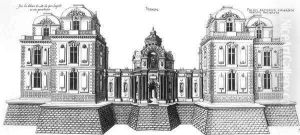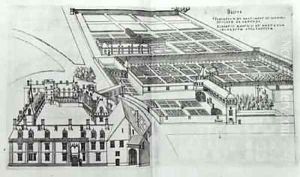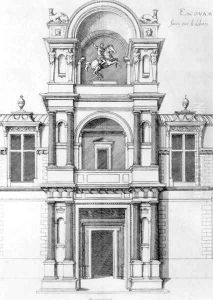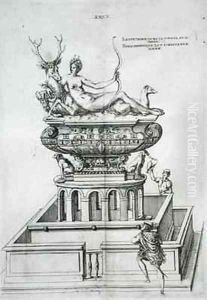J. Androuet (du Cerceau) Ducerceau Paintings
Jacques Androuet du Cerceau, also known as Jacques I Androuet du Cerceau, was a prominent and influential French architect and engraver of the Renaissance period. His exact birth date is not clearly documented, but he is believed to have been born in the second decade of the 16th century. Jacques Androuet du Cerceau is noted for his detailed engravings of French architecture and gardens, which played a significant role in the dissemination of the Renaissance architectural style across France.
Du Cerceau was particularly renowned for his collections of engravings, which included 'Les Plus Excellents Bastiments de France' (The Most Excellent Buildings of France), published in the 1570s. This work showcased the contemporary architectural designs of chateaux, houses, and gardens, and has been instrumental in providing a valuable record of French Renaissance architecture, some examples of which no longer exist or have been significantly altered.
Although he was more famous for his engravings, du Cerceau was also involved in architectural design. His architectural works are less documented, but he is associated with the design of several buildings and structures, including parts of the Chateau de Montceaux and the Pont Neuf in Paris, which was completed after his death.
Du Cerceau's influence extended beyond his lifetime, as his works continued to inspire architects and designers for generations. He is often mentioned as one of the leading figures in the development of the French Renaissance style. His sons, Baptiste Androuet du Cerceau and Jacques Androuet du Cerceau the Younger, also became notable architects, continuing the family tradition.
Jacques Androuet du Cerceau passed away in 1584, leaving behind a lasting legacy through his engravings and contributions to French Renaissance architecture. His works remain a subject of study for art historians and enthusiasts of Renaissance art and architecture.
